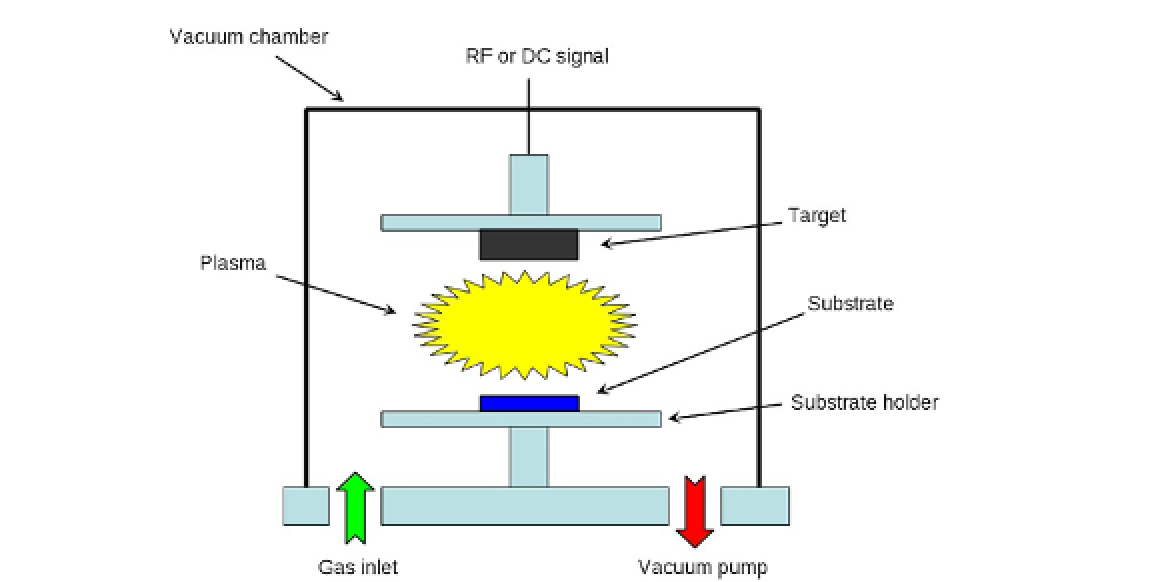Biomedical Engineering Reference
In-Depth Information
FIGURE 15.2
Schematic of a typical sputtering system in either the DC or the RF configuration.
(<5
×
10
−
3
Torr) or high-pressure plasma (5
×
10
−
3
- 30
×
10
−
3
Torr)
[8]
. Secondary electrons are also
emitted from the target surface as a result of ion
bombardment. These electrons play an impor-
tant role in maintaining the plasma.
Three widely used configurations to generate
the plasma for sputtering deposition are the
direct-current (DC) configuration, the radio-
frequency (RF) configuration, and the magnetron-
assisted configuration. The simplest of the three
is the DC configuration, comprising a cathode
(target), an anode (on which the substrate is
placed), and a DC power source. The cathode
and the anode are placed in a vacuum chamber
[8]
. Argon is widely used to establish a dis-
charge. Because the plasma can be established
uniformly over a large area, a solid target with
a large area can be used. The surface of the target
does not need to be planar, so targets with
different shapes can be used to be conformal to
the surface of a given substrate, resulting in
improved thickness homogeneity.
The RF configuration is generally used for the
deposition of electrically insulating materials
such as oxides and polymers. When a RF
potential is capacitatively coupled to a target
(cathode), an alternating positive/negative
potential appears on its surface. In one half
cycle, positively charged ions are accelerated
toward the surface of the target with enough
energy to cause sputtering. In the next half
cycle, electrons reach the surface of the target to
prevent the build-up of charge. Frequencies
used for sputtering deposition are typically in
the range of 0.5-30 MHz, with 13.56 MHz
[8]
being the most widely used. RF sputtering is
used at a low pressure (<10
−
3
Torr).
Finally, in the magnetron-assisted configura-
tion, a magnetic field is imposed to increase the
plasma density as well as the current density at
the cathode (target), thereby effectively increas-
ing the sputtering rate. The magnetic field is
tangential to the cathode surface. The electrons
ejected from the cathode are deflected to stay
close to the target surface. If the magnets behind
the target are arranged properly, the electrons
can circulate on a closed path on the target sur-
face. This electron-trapping effect effectively

